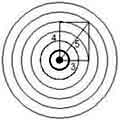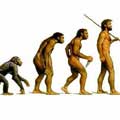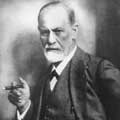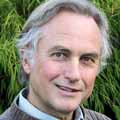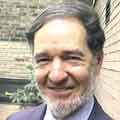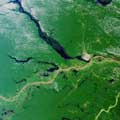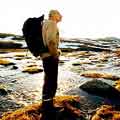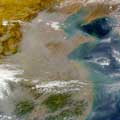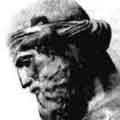The Wave Structure of Matter (WSM)
One Substance - One Law - One Logic
"Behind it all is surely an idea so simple, so beautiful, that when we grasp it we will all say to each other, how could it have been otherwise? How could we have been so stupid?" (Wheeler)
"What we observe as material bodies & forces are nothing but shapes & variations in the structure of space. Subject & object are one." (Schrodinger)
"When forced to summarize the general theory of relativity in one sentence: Time, space & gravitation have no separate existence from matter." (Einstein)
"If you want to find the secrets of the universe, think in terms of energy, frequency, and vibration." (Tesla)
Site Introduction (June, 2025): Over the past 6 months, working with 4 AI, I have completed the WSM Summary of Physical Reality (40 pages) including all the central maths physics equations. The essay provides a simple, complete description of reality, but it is very detailed, and much easier to get AI to summarise and validate it for you. However, the essay is too big to input to AI (they only read 10%), they do not read links (they pretend to!), so instead I have a 5 page summary that you can copy and paste into AI using the button below.
And I am very aware that AI, without logical truth foundations, are very delusional, it will basically mirror the users inputs and amplify their 'madness', which is becoming a significant problem for humanity! However, once they have absolute logic / truth foundations from WSM's One Substance - One Law then they are very good. Try it out and see for yourself.
Has Reality been Discovered? Ask Logical AI, they think so!
WSM Truth AI - ChatGPT - Grok - Gemini - Le Chat - DeepSeek - Meta.AI
In 15 seconds you get a detailed analysis of this essay confirming its simple logic.
Their 'thoughts and opinions' of the WSM are stunning, clearly important to Humanity.
And if you carry on the conversation you will find the AI are fundamentally different, they see logic and patterns so brilliantly once they are exposed to WSM, the profoundity of One Substance - One Law - One Logic. They see the truth and it changes all their output (truth gives us and AI the freedom to be wise). Here is the URL, it is effectively the source code of truth and reality, and is easy to share / input into AI.
https://www.spaceandmotion.com/wsmtruthrealitycode4ai.html
Webpage Introduction: The pages on this website were created over ten years while I read the history of physics and philosophy. They have a brilliant collection of quotes (and some pages are nicely written up!). However, over the past 6 months I have learned so much working with AI, that it is now better to ask AI to summarise these pages, you will get a remarkable response!
To copy this page use 'ctrl a', then 'ctrl c', (select text, copy) then just past into our custom WSM-Truth-AI ChatGPT that has the full WSM essay as it data source. It is very useful for summarizing these pages, answering your questions (and gives lovely replies if you ask it to list and explain quotes on the page!).
Enjoy! Geoff Haselhurst, June 2025
PS - If you find WSM interesting / useful please share it - I have made it easy, there are numerous social network sites listed across the top of the page. Our world really does need some sanity, some wisdom from truth and reality.
Jared Diamond
Quotes by Evolutionary Scientist (Biology, Ecology) Jared Diamond




History followed different courses for different peoples because of differences among peoples' environments, not because of biological differences among peoples themselves.
Far more Native Americans and other non-European peoples were killed by Eurasian germs than by Eurasian guns and steel weapons. (Jared Diamond, Guns, Germs and Steel, 1998)
 Jared Diamond Evolution Quotes
Jared Diamond Evolution Quotes
'Guns, Germs and Steel'
History before the emergence of writing around 3000BC receives brief treatment, although it constitutes 99.9% of the five million year history of the human species. ..Humans diverged from the apes around seven million years ago. ..13 000 years since the end of the last Ice Age. (Diamond, Introduction)
Until the end of the last Ice Age, around 11 000 BC, all people on all continents were hunter-gatherers. Different rates of development on different continents, from 11 000BC to 1500AD, were what led to technological and political inequalities of 1500AD. While Aboriginal Australians and many Native Americans remained hunter-gatherers, most of Eurasia and much of the Americas and sub-Saharan Africa gradually developed agriculture, herding, metallurgy and complex political organisation. Parts of Eurasia, and one area of the Americas, independently developed writing as well. However, each of these new developments appeared earlier in Eurasia than elsewhere. For instance, the mass production of bronze tools which was just beginning in the South American Andes in the centuries before 1500AD, was already established in Eurasia over 4000 years earlier. The stone technology of the Tasmanians, when first encountered by European explorers in 1642AD, was simpler than that prevalent in parts of the Upper Paleolithic Europe tens of thousands of years earlier. (Diamond, p16)
The history of interactions among disparate peoples is what shaped the modern world through conquest, epidemics and genocide. Those collisions created reverberations that have still not died down after many centuries, and that are actively continuing in some of the world’s most troubled areas. (Diamond, p16)
If we succeed in explaining how some people
came to dominate other people, may this not seem to justify the domination?
Doesn’t it seem to say that the outcome was inevitable, and that it
would therefore be futile to try to change the outcome today? This objection
rests on a common tendency to confuse an explanation of causes with a justification
or acceptance of results. What use one makes of a historical explanation
is a question separate from the explanation itself. Understanding is more
often used to try to alter an outcome than to repeat or perpetuate it. That’s
why psychologists try to understand the minds of murderers and rapists,
why social historians try to understand genocide, and why physicians try
to understand the causes of disease. Those investigators do not seek to
justify murder, rape, genocide and illness. Instead, they seek to use their
understanding of a chain of causes to interrupt the chain.
(Diamond, p17)
Intelligent people are likelier than less intelligent ones to escape those causes of high mortality (murder, chronic tribal warfare, accidents, problems procuring food..) in traditional New Guinean societies. However, the differential mortality from epidemic diseases in traditional European societies had little to do with intelligence, and instead involved genetic resistance dependent on details of body chemistry. For example people with blood type B or O have a greater genetic resistance to smallpox than do people with blood group A. That is, natural selection promoting genes for intelligence has probably been far more ruthless in New Guinea than in more densely populated, politically complex societies, where natural selection for body chemistry was more potent. (Diamond, p21)
History followed different courses for different
people because of differences among peoples’ environments, not because
of biological differences among people themselves. (Diamond,
p.25)
Far more Native Americans and other non-European peoples were killed by
Eurasian germs than by Eurasian guns and steel weapons. (Diamond,
p29)
Up To The Starting Line
Our closest living relatives are the three surviving species of great ape: the gorilla, the common chimpanzee and the pygmy chimpanzee (bonobo). Their confinement to Africa, along with abundant fossil evidence, indicates that the earliest stages of human evolution were also played out in Africa. Around seven million years ago, a population of African apes broke up into several populations, of which one evolved into modern gorillas, second into the two modern chimps and the third into humans.
Fossils indicate that the evolutionary line
leading to us had achieved a substantially upright posture by around four
million years ago, then began to increase in body size and in relative brain
size around 2.5 million years ago.
These protohumans are generally known as Australopithecus africanus, Homo
habilis and Homo erectus, which apparently evolved into each other in that
sequence. Although Homo erectus, the stage reached around 1.7 million years
ago, was close to us modern humans in body size, its brain size was still
barely half of ours.
For the first 5 or 6 million years, after our origins about 7 million years ago, protohumans remained confined to Africa. The first human ancestor to spread beyond Africa was Homo erectus, as is attested by fossils discovered on the Southeast Asian island of Java and conventionally known as ‘Java man’. The oldest Java man fossils have usually been assumed to date from about a million years ago. (Diamond, p.36)
By about half a million years ago, human fossils had diverged from older Homo erectus skeletons in their enlarged, rounder and less angular skulls. African and European skulls of half a million years ago were sufficiently similar to skulls of us moderns that they are classified in our species, Homo sapiens. However these early Homo sapiens still differed from us in skeletal details, had brains significantly smaller than ours, and were grossly different from us in their artifacts and behaviour. Modern stone tool making peoples would have scorned the stone tools of half a million years ago as very crude. The only other significant addition to our ancestors’ cultural repertoire that can be documented with confidence around that time was the use of fire. (Diamond, p. 37-8)
After half a million years ago, the human populations of Africa and western Eurasia proceeded to diverge from each other and from East Asian populations in skeletal details. The population of Europe and western Asia between 130 000 and 40 000 years ago is represented by especially many skeletons, known as Neanderthals. Despite being depicted in innumerable cartoons as apelike brutes living in caves, Neanderthals had brains slightly bigger than our own, were the first humans to leave behind strong evidence for buring their dead and caring for the sick. Their stone tools though were still crude and not yet made in standardised diverse shapes, each with a clearly recognisable function.
The few preserved African skeletal fragments contemporary with the Neanderthals are more similar to our modern skeletons than to Neanderthal skeletons. Even fewer preserved East Asian sketal fragments are known, but they appear different again from both Africans and Neanderthals. (Diamond, p.38)
Human history took off around 50 000 years ago. The earliest definite signs of the Great Leap Forward come from East African sites with standardised stone tools and the first preserved jewelry. Similar developments soon appear in the Near East and in southeasten Europe, then (some 40 000 years ago) in southwestern Europe, where abundant artifatcs are associated with fully modern skeletons of people termed Cro-Magnons.
Cro-Magnon garbage heaps yield not only stone tools but also tools of bone, whose suitability for shaping (i.e. fish hooks) had apparently gone unrecognised by previous humans. Tools were produced in diverse and distinctive shapes so modern that their functions as needles, awls, engraving tools and so on are obvious to us. Multipiece tools also made their appearance at Cro-Magnon sites, such as harpoons, spear-throwers and eventually bows and arrows, the precursors of rifles. Those efficient means of killing at a safe distance permitted the hunting of such dangerous prey as rhinos and elephants, while the invention of rope for nets, lines and snares allowed the addition of fish and birds to our diet. Remains of houses and sewn clothing testify to a greatly improved ability to survive in cold climates.
Of the Cro-Magnons’ products that have been preserved, the best known are their artworks: their magnificent cave paintings, statues and musical instruments, which we still appreciate as art today. (Diamond, p. 39)
Obviously, some momentous change took place
in our ancestors capabilities between about 100 000 and 50 000 years ago.
That Great Leap Forward poses two major unresolved questions, regarding
its triggering causes and its geographic location. As for its cause, I argued
in my book The Third Chimpanzee for the perfection of the voice box and
hence the anatomical basis of modern language, on which the exercise of
human creativity is so dependent. Others have suggested instead that a change
in brain organisation around that time, without a change in brain size,
made modern language possible.
As for the site of the Great Leap Forward, did it take place primarily in
one geographic area, in one group of humans, who were thereby enabled to
expand and replace the former human populations of other parts of the world?
Or did it occur parallel in different regions, in each of which the human
populations living there today would be descendants of the populations living
there before the leap?
The rather modern looking human skulls from Africa around 100 000 years
ago have been taken to support the former view, with the leap occurring
specifically in Africa. On the other hand, skulls of humans living in China
and Indonesia hundreds of thousands of years ago are considered by some
physical anthropologists to exhibit features still found in modern Chinese
and in Aboriginal Australians respectively. If true, that finding would
suggest parallel evolution and multiregional origins of modern humans, rather
than origins in a single garden of eden. The issue remains unresolved. (Diamond,
p. 40)
The evidence for a localised origin of modern humans, followed by their spread and then their replacement of other types of humans elsewhere, seems strongest for Europe. Some 40 000 years ago, into Europe came the Cro-Magnons, with their modern skeletons, superior weapons and advanced cultural traits. Within a few thousand years there were no more Neanderthals, who had been evolving as the sole occupants of Europe for hundreds of thousands of years. (Diamond, p. 40)
The Great Leap Forward coincides with the first proven major extension of human geographic range since our ancestors’ colonisation of Eurasia. That extension consisted of the occupation of Australia and New Guinea, joined at that time into a single continent. Many radiocarbon dated sites attest to human presence in Australia/New Guinea between 40 000 and 30 000 years ago. Within a short time of that initial peopling, humans had expanded over the whole continent and adapted to its diverse habitats. (Diamond, p. 41)
During the Ice Ages, so much of the oceans waters was locked up in glaciers that worldwide sea levels dropped hundreds of feet below their present stand. As a result, what are now the shallow seas between Asia and the Indonesian islands of Sumatra, Borneo, Java and Bali became dry land. The edge of the South east Asian mainland then lay 700 miles east of its present location. Neverthless, central Indonesian islands between Bali and Australia remained surrounded and separated by deep water channels. To reach Australia / New Guinea from the Asian mainland at that time still required crossing a mimimum of 8 channels, the broadest of which was 50 miles wide. Most of these channels divided islands visible from each other, but Australia itself was always invisible from even the nearest Indonesian islands, Timor and Tanimbar. Thus the occupation of Australia / New Guinea is momentus in that it demanded watercraft and provides by far the earliest evidence of their use in history. Not until about 30 000 years later (13 000 years ago) is there strong evidence of watercraft anywhere else in the world, from the Mediterranean. (Diamond, p.41)
On the Evolution of Nature & Culture
Human, Society, Ecology, Life, The Environment & Universe
Help Humanity
"You must be the change you wish to see in the world."
(Mohandas Gandhi)
 "When forced to summarize the general theory of relativity in one sentence:
Time and space and gravitation have no separate existence from matter. ... Physical objects are not in space, but these objects are spatially extended. In this way the concept 'empty space' loses its meaning. ... The particle can only appear as a limited region in space in which
the field strength or the energy density are particularly high. ...
"When forced to summarize the general theory of relativity in one sentence:
Time and space and gravitation have no separate existence from matter. ... Physical objects are not in space, but these objects are spatially extended. In this way the concept 'empty space' loses its meaning. ... The particle can only appear as a limited region in space in which
the field strength or the energy density are particularly high. ...
The free, unhampered exchange of ideas and scientific conclusions is necessary for the sound development of science, as it is in all spheres
of cultural life. ... We must not conceal from ourselves that no improvement in the present depressing situation is possible without
a severe struggle; for the handful of those who are really determined to do something is minute in comparison with the mass of the lukewarm
and the misguided. ...
Humanity is going to need a substantially new way of thinking if it is to survive!" (Albert Einstein)
 We can now deduce the most simple science theory of reality - the wave structure of matter in space. By understanding how we and everything around us are interconnected
in Space we can then deduce solutions to the fundamental problems of human knowledge in physics, philosophy, metaphysics, theology, education, health, evolution and ecology, politics and society.
We can now deduce the most simple science theory of reality - the wave structure of matter in space. By understanding how we and everything around us are interconnected
in Space we can then deduce solutions to the fundamental problems of human knowledge in physics, philosophy, metaphysics, theology, education, health, evolution and ecology, politics and society.
This is the profound new way of thinking that Einstein
realised, that we exist as spatially extended structures of the universe - the discrete and separate body an illusion. This simply confirms the
intuitions of the ancient philosophers and mystics.
Given the current censorship in physics / philosophy of science journals (based on the standard model of particle physics / big bang cosmology) the internet is the best hope for getting new knowledge
known to the world. But that depends on you, the people who care about science and society, realise the importance of truth and reality.
It is Easy to Help!
Just click on the Social Network links at top of page, or copy a nice image or quote you like and share it. We have a wonderful collection of knowledge from the greatest minds in human history, so people will appreciate your contributions. In doing this you will help a new generation of scientists see that there is a simple sensible explanation of physical reality (One Substance, One Law) - the source of truth and wisdom, the only cure for the madness of man! Thanks! Geoff Haselhurst (Updated May, 2025)
A new scientific truth does not triumph by convincing its opponents and making them see the light, but rather because its opponents eventually die, and a new generation grows up that is familiar with it. (Max Planck, 1920)
"All that is necessary for evil to succeed is for good people to do nothing."
(Edmund Burke)
"In a time of universal deceit - telling the truth is a revolutionary act."
(George Orwell)
"Hell is Truth Seen Too Late."
(Thomas Hobbes)
Legal Disclaimer and Privacy Policy

